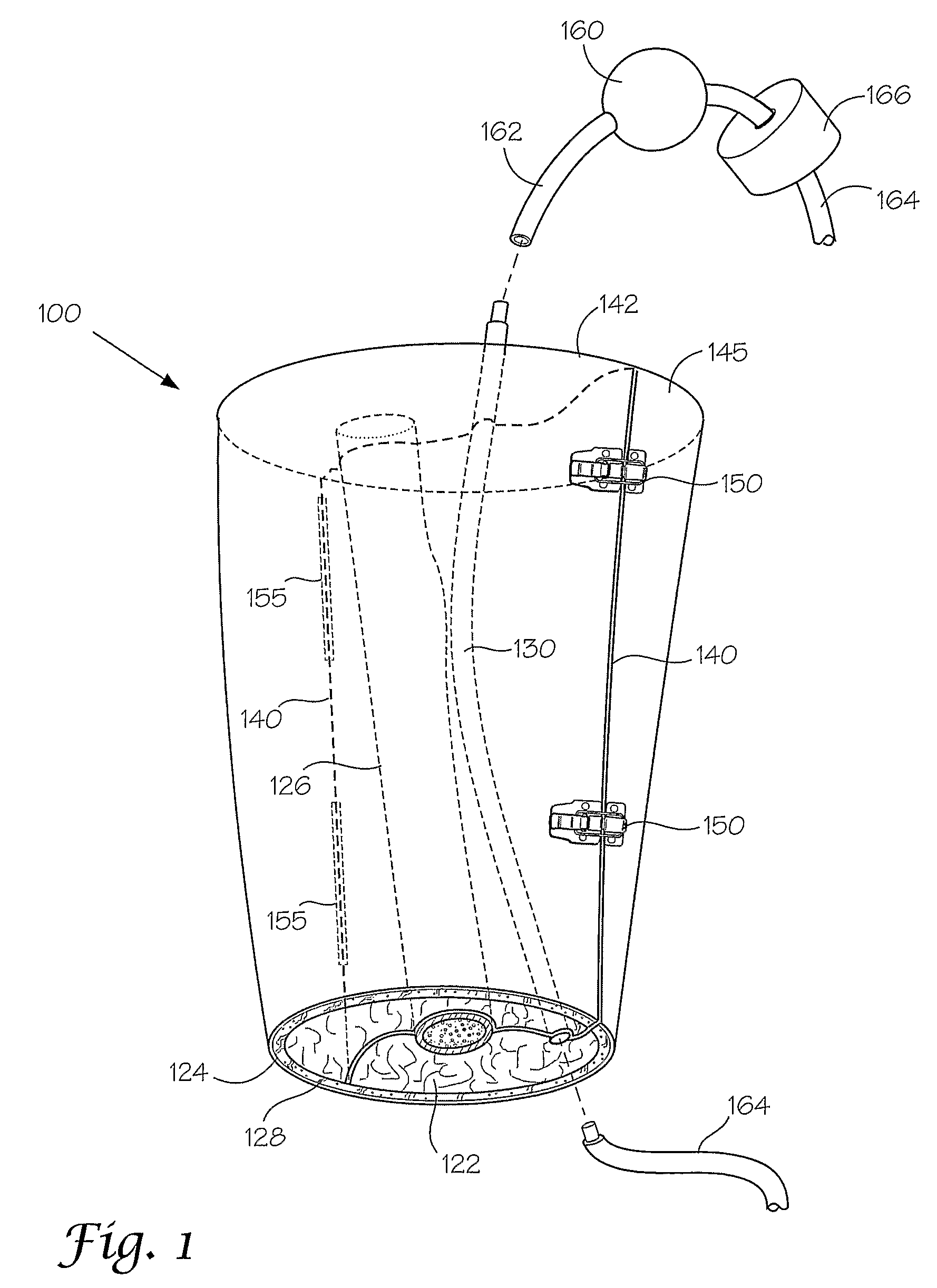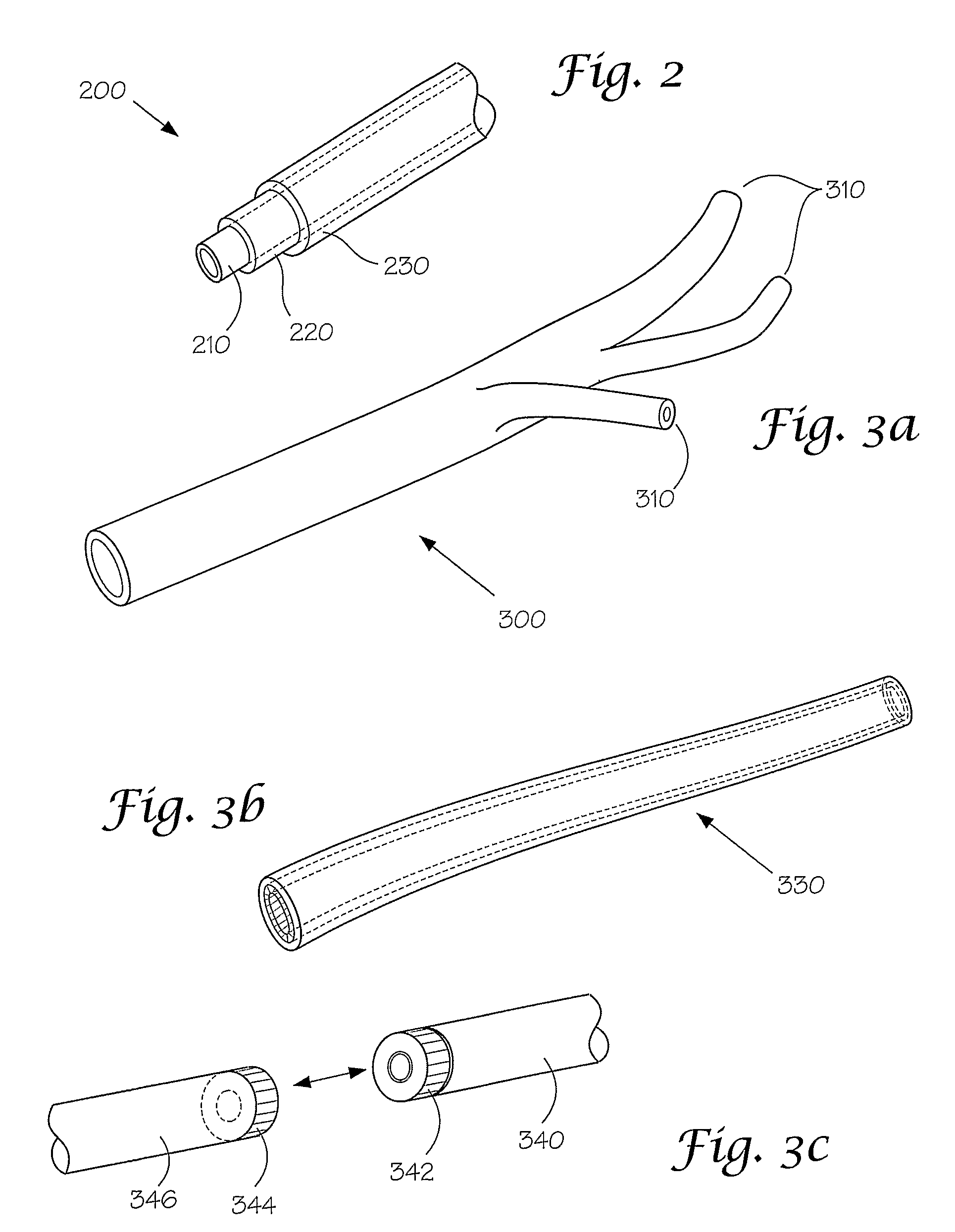Models and methods of using same for testing medical devices
a technology of medical devices and models, applied in educational models, additive manufacturing apparatus, instruments, etc., can solve the problems of reducing product quality, increasing development costs, and lengthening product timelines, so as to reduce product quality, increase development costs, and lengthen product timelines
- Summary
- Abstract
- Description
- Claims
- Application Information
AI Technical Summary
Benefits of technology
Problems solved by technology
Method used
Image
Examples
example 1
Testing of a Guidewire Exchange Catheter
[0169]This following experiment describes a simple Animal Replacement Model used in the testing of a guidewire exchange catheter. The testing described includes the simulation of worst-case conditions to provide an estimate of device performance and reliability when misused in a clinical setting. This data was used to determine the suitability of the device for clinical trials. The materials required appear in Table III and the fabrication process for the tissue analog materials appears in Table IV.
[0170]
TABLE IIIMaterials and devices used in simulation example.Device or Material UsedQuantityDevice CodeBalloon Guidewire131Guidewire Exchange Catheter132AVE GT1 Floppy Guidewire13AVE Microstent II Stent Catheter14ACS RX Multilink Stent Catheter15Scimed Niron Ranger Stent Catheter16Scimed Magic Wallstent Stent Catheter17Hotplate Stirrer1—Animal Replacement Model1—Dimethyl SulfoxideA / R—Polyvinyl Alcohol (Mw = 130k-150k)A / RCompletelyhydrolysed
[0171]...
example 2
Rapid production of Neurovascular Model Employing a Monomer Containing Tissue Analog Liquid
[0193]According to one specific embodiment, the subject invention relates to the production of an anatomical neurovascular brain model comprising hydrogel materials and constructed using modified stereolithic techniques. Upon obtaining the anatomical images, converting them to CAD format and then converting to STL format, the model is built upon a platform situated just below the surface in a vat of tissue analog liquid. The liquid comprises water (50%-90% by mass), a monomer (10%-50% by mass), and an initiator (0.1%-1.0% by mass). In this example, a monomer such as N-vinyl pyrrolidone is implemented and a UV initiator such as ethyl 2,4,6-trimethylbenzoylphenylphosphinate is utilized. In this embodiment, the equilibrium water content of the tissue analog liquid closely approximates that of the intended hydrogel material of the artificial anatomical structure. Preferably, the water content of t...
example 3
Rapid Production of Neurovascular Model Employing a Polymer Containing Tissue Analog Liquid
[0196]According to this example, an artificial anatomical model is constructed utilizing modified stereolithography techniques that employ a tissue analog liquid comprising water, a polymer, and a cross-linking agent. The polymer agent in this example is poly-vinyl alcohol and the cross-linking agent is glutaraldehyde. The basic methodology is similar to that described in Example 1, except that instead of the tissue analog liquid comprising a monomer that forms a polymer network, the tissue analog liquid comprises a polymer that is cross-linked to achieve the desired gelling and other properties of the tissue analog material.
PUM
 Login to View More
Login to View More Abstract
Description
Claims
Application Information
 Login to View More
Login to View More - R&D
- Intellectual Property
- Life Sciences
- Materials
- Tech Scout
- Unparalleled Data Quality
- Higher Quality Content
- 60% Fewer Hallucinations
Browse by: Latest US Patents, China's latest patents, Technical Efficacy Thesaurus, Application Domain, Technology Topic, Popular Technical Reports.
© 2025 PatSnap. All rights reserved.Legal|Privacy policy|Modern Slavery Act Transparency Statement|Sitemap|About US| Contact US: help@patsnap.com



